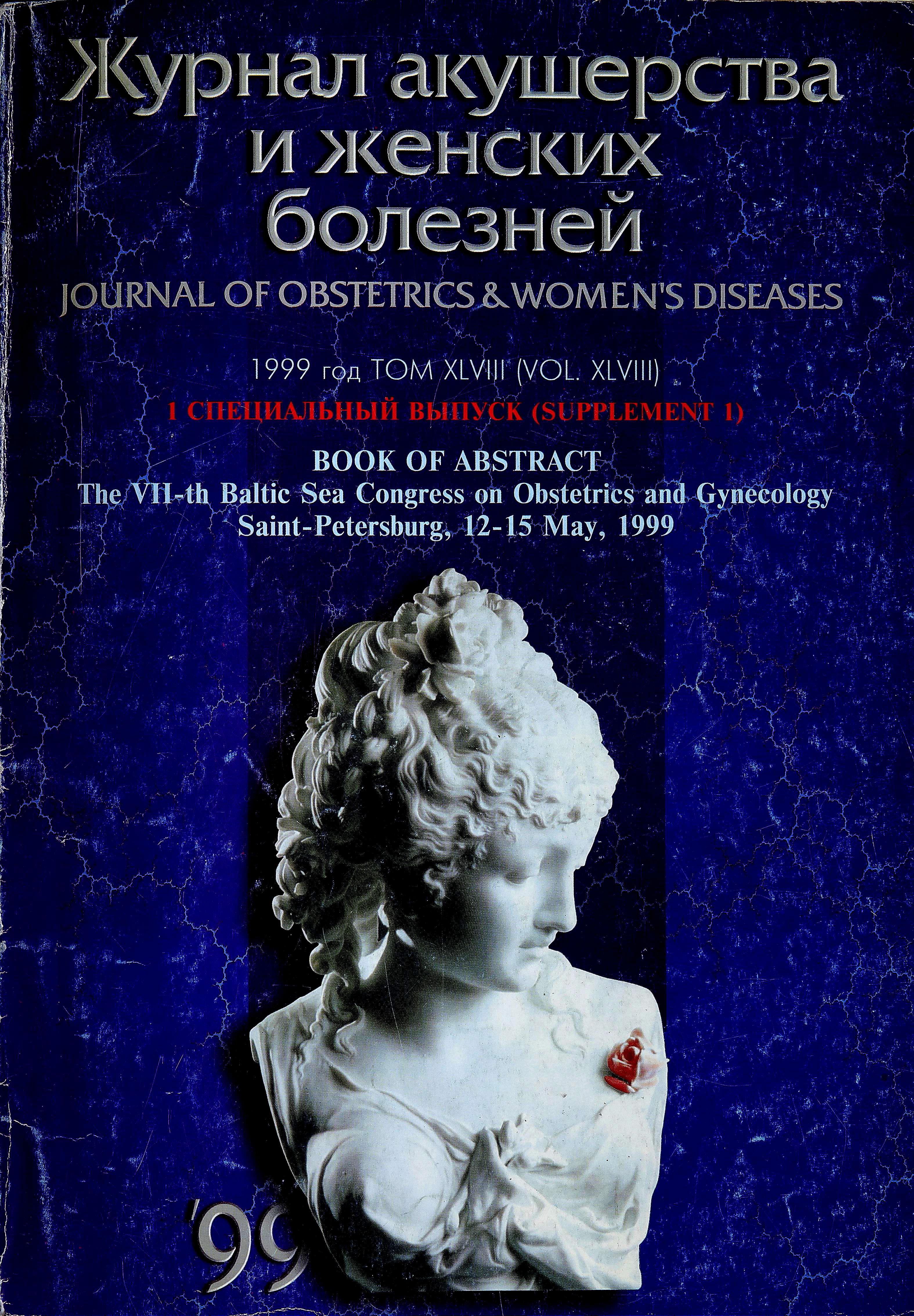Retrospective analysis to state the results of treatment and labor outcome with intrauterine infections
- Authors: Volkov N.A.1, Tzhai V.B.1, Golubtzov P.S.1, Bazina M.I.1
-
Affiliations:
- Krasnoyarsk State Medical Academy
- Issue: Vol 48, No 5S (1999)
- Pages: 165-165
- Section: Articles
- Submitted: 23.02.2022
- Accepted: 23.02.2022
- Published: 15.12.1999
- URL: https://journals.eco-vector.com/jowd/article/view/101536
- DOI: https://doi.org/10.17816/JOWD101536
- ID: 101536
Cite item
Full Text
Abstract
201 pregnant women were delivered by cesarean section with intrauterine infections: 86 of them (42,7%) were early diagnosed and took 2 courses of medical treatment, 115 (57,3%) of late infection diagnostic and they took only one treatment course. 75 pregnant women with infections joined the first group and delivered at once; 28,6% of women had prior treatment and were operated by ceserean section. To discuss the outcome of labor one took into consideration the rate of disorder of functional fetus position (ultrasound scanning, CTG, doppler, hormone tests).
Full Text
Methods: Retrospective research
Results: 201 pregnant women were delivered by cesarean section with intrauterine infections: 86 of them (42,7%) were early diagnosed and took 2 courses of medical treatment, 115 (57,3%) of late infection diagnostic and they took only one treatment course. 75 pregnant women with infections joined the first group and delivered at once; 28,6% of women had prior treatment and were operated by ceserean section. To discuss the outcome of labor one took into consideration the rate of disorder of functional fetus position (ultrasound scanning, CTG, doppler, hormone tests). Fetus retardation was registered more often among pregnant with intrauterine infections - (22,4%); chronicle fetus hypoxsia (44,2%), placental blood flow disorder (52,6%) and hormone alteration (61,3%). A percentage of healthy delivered children in the principle group was 49,5%; in a test group it was 21,6%, (p<0,05). The rate of perinatal brain and destruction of infants were correlatively 74,2% and 56,9%, (p<0,05).
Conclusions: A brief revision of infant’s development informs that up-to-date treatment and careful labor management will serve a good deal to perspective child’s development complicated with infection.
About the authors
N. A. Volkov
Krasnoyarsk State Medical Academy
Author for correspondence.
Email: info@eco-vector.com
Russian Federation, Krasnoyarsk
V. B. Tzhai
Krasnoyarsk State Medical Academy
Email: info@eco-vector.com
Russian Federation, Krasnoyarsk
P. S. Golubtzov
Krasnoyarsk State Medical Academy
Email: info@eco-vector.com
Russian Federation, Krasnoyarsk
M. I. Bazina
Krasnoyarsk State Medical Academy
Email: info@eco-vector.com
Russian Federation, Krasnoyarsk
References
Supplementary files







